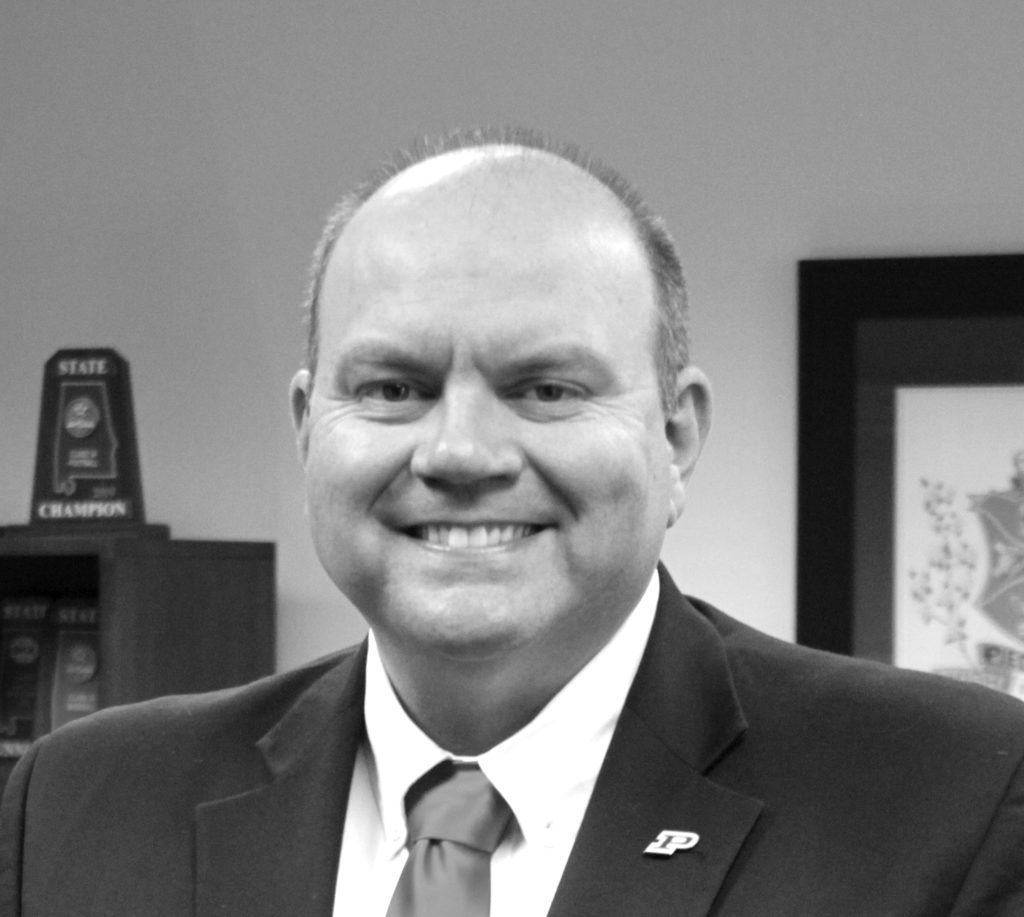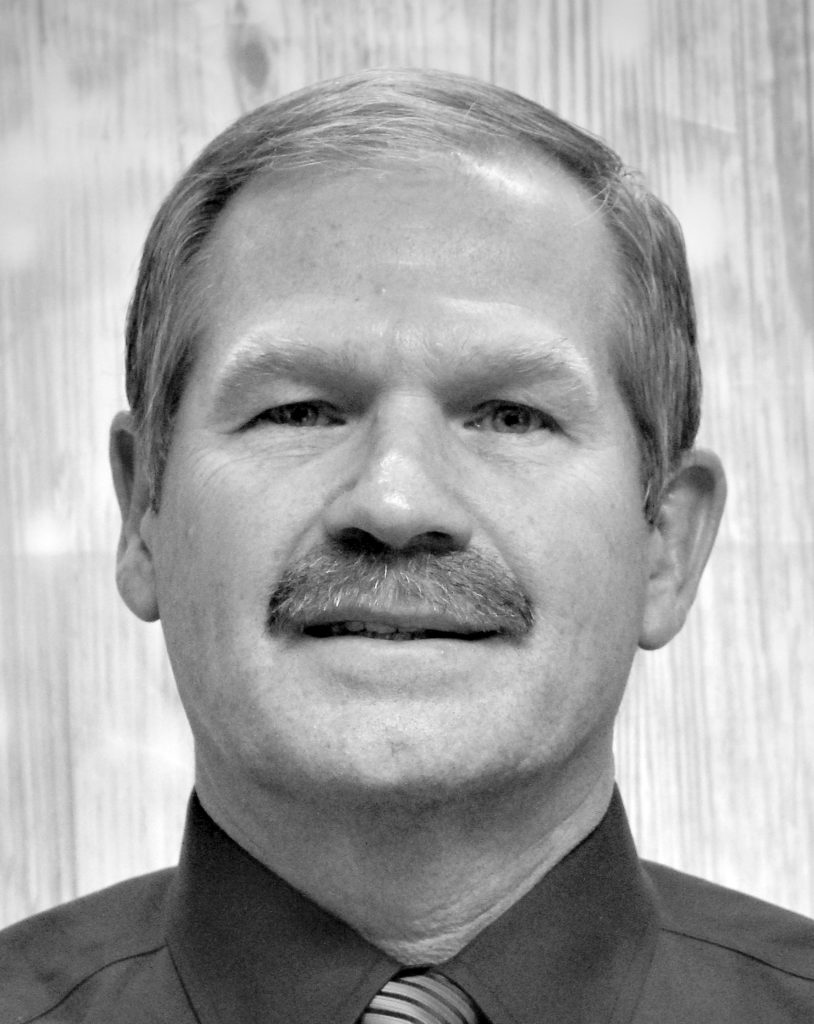Roundtable: Assessments During a Pandemic: March 2021


Michelle Kefford 
Adam Clemons 
Jeff Makelky
This year has been one of the toughest years for teachers all over the United States. In an era when many teachers feel as though they are giving their all—but it may not be enough—they may also be concerned that their yearly assessment will reflect poorly on their efforts. To examine what accommodations can be made for teachers this year, we enlisted the help of Michelle Kefford, principal of Marjory Stoneman Douglas High School in Parkland, FL, and a 2021 NASSP Principal of the Year finalist; Adam Clemons, principal at Piedmont High School in Piedmont, AL, and a 2021 NASSP Principal of the Year finalist; and Jeff Makelky, principal at Big Piney High School in Big Piney, WY, and the 2020 Wyoming State Principal of the Year. Principal Leadership senior editor Christine Savicky moderated the conversation.
Savicky: Is it fair to be assessing teachers in the same way as you would in a normal in-building year?
Makelky: The first word that I guess comes to mind for me is “exceptions.” I think we have to be able to make exceptions in this year, especially if you’re in a situation where, in Wyoming we call it Tier 3, which would be totally online learning. If you’re not in face-to-face instruction, we have to realize that that assessment document and tool that we use was not built for online learning.
Kefford: I think we do have to understand it’s not a normal year. Therefore, the assessment instrument that was built to assess and evaluate what’s going on in a normal year really can’t be on the same level playing field as this abnormal situation we find ourselves in. When we’re going into classrooms, we’re looking at what’s going on from the vantage point of the teacher, but we’re also looking at kids, and we’re looking at the level of engagement and the level of interaction between student and teacher. That is completely skewed with this new learning platform. A lot of our kids don’t have their cameras on in the online format because of technology issues or bandwidth issues or things like that. So, there are things that really prevent us from being able to see the whole picture as we would in a physical classroom, brick-and-mortar, with students and teachers physically in front of us.
Clemons: I think every educator should still strive toward the goals that they have established, but there has to be exceptions considering this year. I do think that we still have to continue to strive toward making sure that we are educating our students as best as possible. I think that’s what assessments [and] evaluations are used for. During this inaugural year of this pandemic, I think that we definitely have to take in consideration all the social and emotional challenges that are going on with everyone—our students, our teachers, even ourselves—but we want to still have the goal in mind of educating students. So, no, it’s not fair to evaluate the same as in a normal year.
Savicky: How are you determining proof of learning in a virtual world?
Kefford: I think this is something that our teachers are really struggling with, simply because when the kids are behind a computer screen, you don’t know what else is there with them. It’s very, very difficult when you’re thinking about traditional assessments as a means to determine that students are learning concepts. Our teachers are utilizing different means of assessment a lot: formative types of assessments where there may be a survey embedded, or questions that are answered immediately, right there in the delivery of the lesson.
I think we have major concerns with regard to the validity of assessments, simply because you don’t know what else is around that child. If you don’t know what other aides are there that potentially are assisting that child, you can’t be certain as an educator that that child is taking that assessment and demonstrating proof of learning by themselves, where in a classroom, in a brick-and-mortar setting, you would have control over the environment more so than in a virtual [class]. We really need to look into different ways to determine acquisition of knowledge just because of the format and because of what we’re up against.
Clemons: We were fortunate at Piedmont in that we have been a 1:1 school for many years. We’ve had a virtual school, and we’ve had a certain number of students who have been virtual with us. So, when the pandemic hit and we had to go virtual, it was an easier transition for us than most. We continue to use programs, look at data that would come back to us. Now, obviously we had to make modifications—such as we can’t now take the real-time data and make a small group from it, just because the pandemic doesn’t allow for such—but you can continue to use programs for proof of learning, as well as look at more projects and be more project-based than standardized assessments.
Makelky: I think this is one of the biggest items or issues that teachers are going to be dealing with. Like Kefford, we are fortunate to still be in 1:1. We have some students within quarantine and so we’re sort of doing both, but when we go large-scale—if we have to go large-scale online with everybody—we’ve been working on that. At our staff meeting yesterday, I said, “How are you going to assess? How are you going to assess learning if you end up in Tier 3?” I think the biggest thing that came out of that is finding different ways to ensure engagement, [determining] if students are engaged—whether that be responding back to teachers’ questions, or are they there for Google Hangouts or there for Zooms? I think it’s going to be a lot more of an individual basis rather than teaching to the group or to the class.
Assessments—that’s the million-dollar question, the validity of assessments. I think we’re going to have to be creative, and we’re going to have to do more one-on-one, having that student walk us through, whether it’s a math problem or whatever, show their work or explain them, record themselves and submit that recording to the teacher, but that’s a big concern of mine. That’s probably the biggest. I think overall, if we can prove that they are engaged, then we’re going to assume there’s learning going on.
Savicky: How does the observation process change in a hybrid or online instructional model?
Clemons: The engagement of the administrator is different. You can’t walk into a room and ask a kid, necessarily, in a virtual room, “What are you learning?” But you can go into the Zoom meets. We have about two-thirds of our students here face to face, and a third are online. I still get into the classrooms, and what is being taught is being taught to both the traditional and the online students. We have ways in which my teachers in their curriculum maps—we’ve had to modify the curriculum map so that it shows ways in which they are addressing the online student—the instructional practices that they are engaging with them [are] also [what] that traditional student would be getting, but we’re still in classrooms. I go in physically as well as I pop in virtually, and so that’s the biggest change.
Makelky: I would echo what Clemons said about just going into some of the Zoom instructional meetings, Google Hangouts, whatever the format being used. I know I had to do that last year with one of my evaluations that didn’t get done before we broke into the online learning. So, that was my first experience. I think looking at documentation is also important, looking at what’s planned for the teachers, their goals for the week, their lesson plans. I think that becomes more important since you can’t walk into that classroom and observe as easily. That’s the challenge. We have to snoop and we have to be invited into their Zooms and their Google Hangouts. That’s where the learning is going on, so that’s where we have to be.
Kefford: Just like my colleagues, we certainly have popped into so many classes, and we do so relatively routinely, just so the kids and the teachers feel supported and they’re used to seeing our faces. That just provides a level of comfort, really, because when it does come to the time when you’re sitting in there for a more significant amount of time, they’re used to seeing everybody in there as far as administration is concerned. We also have to keep in mind that meeting with teachers before you actually go in and observe is important. So, we’re really encouraging our teachers to come in and have those pre-conference meetings so we can really sit one-on-one and have the conversations about, “This is how you’re being evaluated.” Especially for new teachers—we do have a lot of new staff this year, so not only are they new to teaching and this profession, they’re learning in this crazy time that we’re living in. We want to make sure everybody’s comfortable and on the same page. We really do encourage those meetings so that people have an opportunity to ask questions and seek clarification, maybe talk through some ideas, so that everybody feels very comfortable when it comes to that evaluation time.
Savicky: Are there resources and supports that you can go to that help you with the evaluations of teachers?
Makelky: To be honest with you, I haven’t seen a lot. We’re being flooded with a lot of resources about how teachers can be successful in transitioning to online learning. As far as the evaluation system for us and how we would do that differently … I don’t see a lot out there. I guess I would rely on some of my colleagues, other principals in our association. I think that’s really, really important. We have roundtable discussions like this on a pretty frequent basis, especially this past year because of all the new things we’re being hit with. I’ll tell you that I have learned a lot [from] my colleagues in other school districts.
Kefford: We are actually very fortunate in our district because we have a very supportive employee evaluations department, and we have evaluation specialists who work directly with schools to help us through this process. We are transitioning to a new evaluation system this school year that was already in the works prior to the pandemic and all of these changes that we’re experiencing as far as the physical platform of school is concerned. They put together trainings; they put together brain charts, and we had to actually engage in a training about how to make this shift and what does it look like for administrators going in and evaluating teachers in this virtual platform.
We also have an innovative learning department that has been really instrumental in providing tools and programs and things to help teachers navigate through the online platform that are aligned specifically to the evaluation model. So, teachers now are seeing, “This is what I would do in a traditional classroom, but this is how I can adapt it in an online platform to make sure I am meeting the mark and hitting all those targets that I will be assessed on.”
Clemons: We are a very small district. We only have two central office administrators. Traditionally, we do walk-throughs every week of our teachers, and that’s more for our internal data collection as a district, but they have been very flexible in that we have lacked those considerably this year. Now, the state still mandates that we do the observation instrument that they have in place. As alluded to earlier, I do meet and talk to my colleagues frequently at the association to which we belong, and that’s probably the best way in which I’ve had support.
Our state superintendent and our state school board have really bent over backwards trying to be flexible and to be understanding of everything. But they are under the state legislature, and because the legislature has really not been in session much during this pandemic, it has kind of slowed down the bureaucracy of what changes can take place during this time. So, we are still operating at a state level with the assessments under pre-pandemic instruments that we have to use.
Savicky: Recognizing that educators have not been trained at a deep level around online education, are there considerations for their proficiency ratings on the current rubric?
Kefford: Unfortunately, we don’t have control over the instrument itself or how the rubric is designed, so we don’t really have any leeway in terms of making any kind of modifications or changes to the rubric itself. That being said, we are very cognizant of the fact that this is a new model for teachers, and they’re in a new environment that they’ve never had to face before. For us, it was really, really important to ensure everybody is clear on the model, clear on how they’ll be evaluated, and also clear on some of the tips and tools and strategies they can use to ensure they’re meeting those marks to get the evaluation that they’re striving to get. That goes back to ensuring that we meet with them and have those conversations. We have training set up where staff will support one another in the model and share ideas and share best practices and strategies as they’ve put them into place and into practice in the classrooms.
Clemons: We’ve continued on with our digital programs that we used pre- pandemic. The training is still there that we provided before and during our day to days, for which we meet monthly.
We are still providing educators with conversation pieces as well as [professional development] around the programs that we offer. As far as the proficiency ratings on the current rubric, again, the state has not allowed much flexibility in regard to what we must continue to do, and so they still are filling out the self-assessment. They’re still setting objectives, and we still are having to go in and do our observations. Now, granted, I have the autonomy to be a little more flexible in our observations than I guess traditionally I would have had, but I’ve been satisfied with overall the training that we provide at a school and district level.
Makelky: We don’t have official considerations, but yes, this is a year that we have to be flexible. To give you an example of how we have to be flexible, I’m going to read you just a couple of items off of the current teacher evaluation system that we’re using. Here’s the first one: It says, “Teacher utilizes appropriate methods of assessment,” and there are, of course, different categories there. Another one says, “Teacher maintains a classroom culture that supports students in achieving individual and classroom goals.” Another one says, “Teacher creates an inclusive environment that promotes positive social interaction and active engagement for learning outcomes.” Those are all built around that traditional brick-and-mortar class. They are not modified or adjusted to what teachers are experiencing now and will experience probably before the school year’s over if they haven’t. Unfortunately, we have the tool that we have from the district, and no one envisioned this, and so it’s not anybody’s fault, but we’ve got to make it work, and the key is we’ve got to be flexible.
Savicky: Is there a process already in place to determine whether educator evaluations will be impacted in any way for this upcoming school year?
Clemons: I do believe that evaluations are important, and to modify them in a way that reflects the current environment. We have to make modifications to the instruments for really assessing our good practices in place and what can be used to support those. The internal observation instrument that we built in our district, really, in a way did that prior to the pandemic, just because of our digital resources that we used and our virtual school that had kind of been in place before. But it is always good, I think, to evaluate at the end of a year to see what changes need to be made—and I’m sure that we will as a district for our internal walk-throughs—but I have confidence that our state will also be looking at the teacher evaluation piece at the state level to better reflect a true observation of what students are learning. I think everybody has that great fear of the slide that will occur from this pandemic, and we cannot afford as a state and a country to risk that. One of the best judgments that we have is the observation instruments of our teachers to see that good instruction is occurring.
Makelky: From the state level, there haven’t been any modifications or anything different. As a district—we’re a small district—we have not done anything like that, either. However, I guess if I were the superintendent, the first thing I would do is, once we moved into what I call Tier 3—strictly online learning—I would say that the principals from each building, the superintendent, and at least some teacher representatives need to be in a meeting, in a discussion. Take our current tool … and really go through it and streamline and try to clarify the most critical things that we can assess and give feedback on given the environment of learning that would be online. I think we have to get together and narrow the focus and say, “These are the things that we’re really going to be giving feedback on and be assessing.”
Kefford: As far as modifications to the instrument itself, that obviously would be a state and district decision. The instrument we currently are moving to contains 23 elements of teacher strategies and behaviors, and we’re focusing on seven as we transition to this new model. We’re also taking into consideration what’s going on with regard to the pandemic and the changes in the educational platform. I do think, though, that we do need to be sensitive and aware of what the teachers are going through and how that’s impacting their ability to do certain things in the classroom.
Our teachers traditionally use formative measures to gauge the learning and the proficiency in our students leading up to these assessments but, again, because of the inability to really understand or really ensure that these scores they’re getting are valid and a true indication of what the student is learning, it’s hard to know, and these teachers are nervous. They’ve expressed that; I’ve talked to so many teachers who are nervous about these summative assessments that are state-delivered, and what is that going to look like? I think that really needs to be taken into consideration as we move through the year, because a lot of these tests, especially at the high school level, are very high stakes. They’ll determine whether or not a child graduates. They determine a big chunk of not only the teacher’s evaluation, but the school’s evaluation. So, those things need to be taken into consideration because there are so many things that are not in our control.
Savicky: What are you doing as the principal to help your teachers cope with these mandatory evaluations?
Makelky: That’s a great question. I would say my first thought is walk-through-heavy. I need to be doing lots of walk-throughs. More informal feedback opportunities—our teachers need feedback, and I think that’s probably best represented in being in the classroom for shorter periods of time and more frequent observations. So, I would think the walk-throughs, those become more important. Now, that’s as long as we can walk through our classrooms while our students are here. Right now, we’re fortunate to have that. But it also would mean participating in online activities that teachers have lined up as well that we’ve already talked about.
I guess I see myself as a policeman, or I should say like a highway patrolman. If you see a highway patrolman, you think of them as monitoring the speed and writing tickets and things like that, but I see our teachers right now driving a car that’s got a flat tire. They’re broken down on the side of the road. We need to assist them. I think the biggest thing is to find ways where we can help them. They’re entering new challenges, and we should have some experience behind us—maybe not with online so much, but some experience in education. We need to offer all the tools and experience that we have to especially our younger teachers or just anybody who needs them. So assist, assist, assist.
Kefford: You know, I would echo that with the “assist” sentiment. We are working, and we’ve been working, with not only the supports and the resources that are provided by our district, but the supports and resources that exist within our own building. Like I shared earlier, we do have sessions already set up where we will work with teachers and they can come and collaborate on best practices, on how to align the instructional delivery in the classroom to this assessment instrument, and what that looks like. Giving routine feedback and providing really an environment and a culture—which we do have; I’m very grateful—where there is a lot of sharing and collaboration.
It is really heartwarming when you see the teachers really supporting one another and offering assistance and the sharing of best practices and having other teachers come in and witness what they’re doing. In fact, just this morning, one of my teachers sent out an email to the entire staff, and this is very, very routine here: “Hey, I just came across this new strategy and this is what I’m doing. If you want to pop in my class, come in. Here’s the link,” and then kind of a synopsis of what she’s doing. It happened to be an escape room in her Teams online lesson. So, it’s about really providing opportunities for us to share best practices and share that support and utilize the resources at our disposal, and when we can’t find them, guess what? We create our own to make sure our teachers have what they need.
Clemons: This year, I’ve kind of felt like that guru in the movie “Couples Retreat” who told folks to go into the water and swim with the sharks but not to panic. But the teachers are saying, “He said not to panic!” It’s assuring the teachers that we will get through this and that we are very understanding of the challenges and the difficulties that come every single day. It seems like every minute something new, something difficult to try to overcome, comes our way. This has been the toughest year of my career. I understand that we have state mandates, but if we have the autonomy that some allow, then take those and be flexible, and be understanding, and care, and assist, and lift up our educators who are on the front lines and just make sure that they have what they need to get the best to our students.
